Introduction
The neoliberal system operates on a highly hierarchical and striated structure to facilitate the accumulation of wealth and power at the very top through the exploitation of human capital. Architecture has become complicit in institutionalizing this hegemonic structure in Singapore that has given rise to social imbalances, spatial injustices and divisions across the city. This thesis project investigates how architecture has been utilised as a product and a medium to assert power and control to fully exploit the labourer. It delves deeper into the inequalities that have developed with regards to the work permit holder community, such as poor living conditions, degradation of identity and exclusion from society, to better unpack the principles of power and control that have been embedded in architecture.
In the same way that architecture has become a tool of power and control over, the premise of this project is that architecture also has the capabilities to empower and emancipate. It explores this hypothesis through the re-examination of an intervention into the proposed masterplan for the Jurong Lake District that has been projected to be the second Central Business District in Singapore.
Design Exploration
The design intervention has two facets. It will first take form as a reinterpretation of the civic space, empowering the diverse groups of people operating in and around the site, through a curation of programmes, innovative technology and engagements between various stakeholders. The next aspect requires the development of a toolkit of design principles to dilute, diverge and manipulate the neoliberal structure and power. Through this, nuances across the intervention are crafted, creating a range of conditions that have the potential to facilitate new engagements, challenging the segregation and prescriptions embedded in the power structures of the city
Research Conclusion
While arguably, architectural interventions alone may never be sufficient in mediating the power structures within the city, the resulting social injustices cannot be resolved without proper spatial remedies, as social structures are reinforced by space in the same way space is crafted by society (Soja, 2010).
The thesis was an investigation into how the development of a new approach towards designing spaces within the city could facilitate the creation of more inclusive and democratic spaces while maintaining, or even enhancing, its functioning and outputs. It is undeniable that production and consumption zones are needed for the functioning of the city, but its transcendence into every aspect of the city is unnecessary, and at times, even counterproductive. A balance between these zones and civic spaces are needed, but its mere provision is insufficient still. The goal should be to strive for cohesion between the civic space and these zones, such that the civic space may act as a cushion or breathing space for the power structures that will inevitably develop around these zones.
The thesis attempted to explore how this cohesion could be achieved through the implementation of the toolkit of design principles. It creates a range of conditions that have the potential to facilitate new engagements that challenge the segregation and prescriptions embedded in the power structures of the city, establishing new structures when activated, no matter how temporal. Its spaces allow users to engage with or disengage from the activities within the architecture when they choose to, a key trait of a truly inclusive and democratic civic space.
While this alone is insufficient in resolving the inequalities of the city, I believe the development of this approach and toolkit could be a gateway towards an inclusive city as it begins to present new conditions and engagement otherwise restricted and removed by existing power structures and is key to the dilution, divergence and manipulation of power.
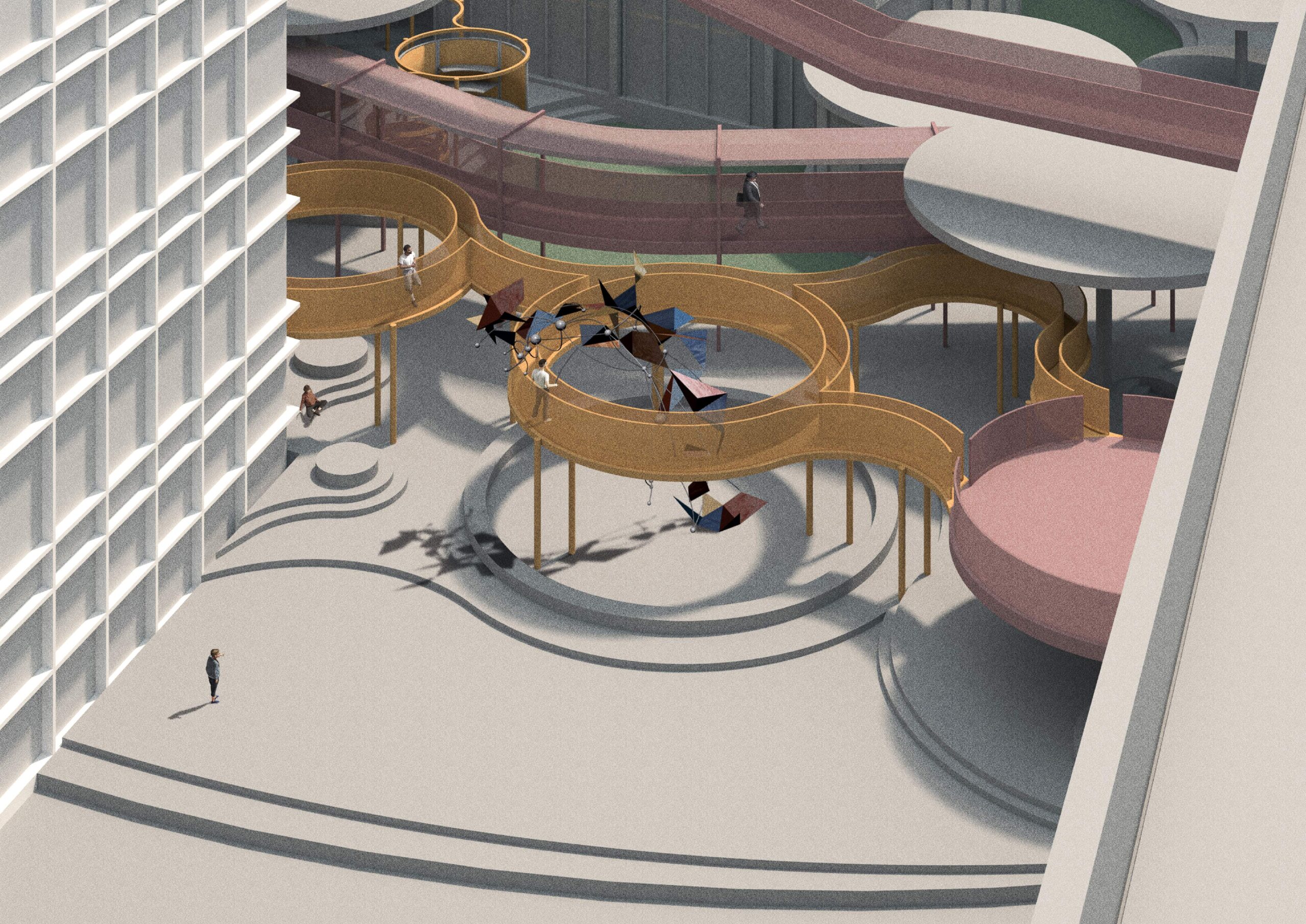
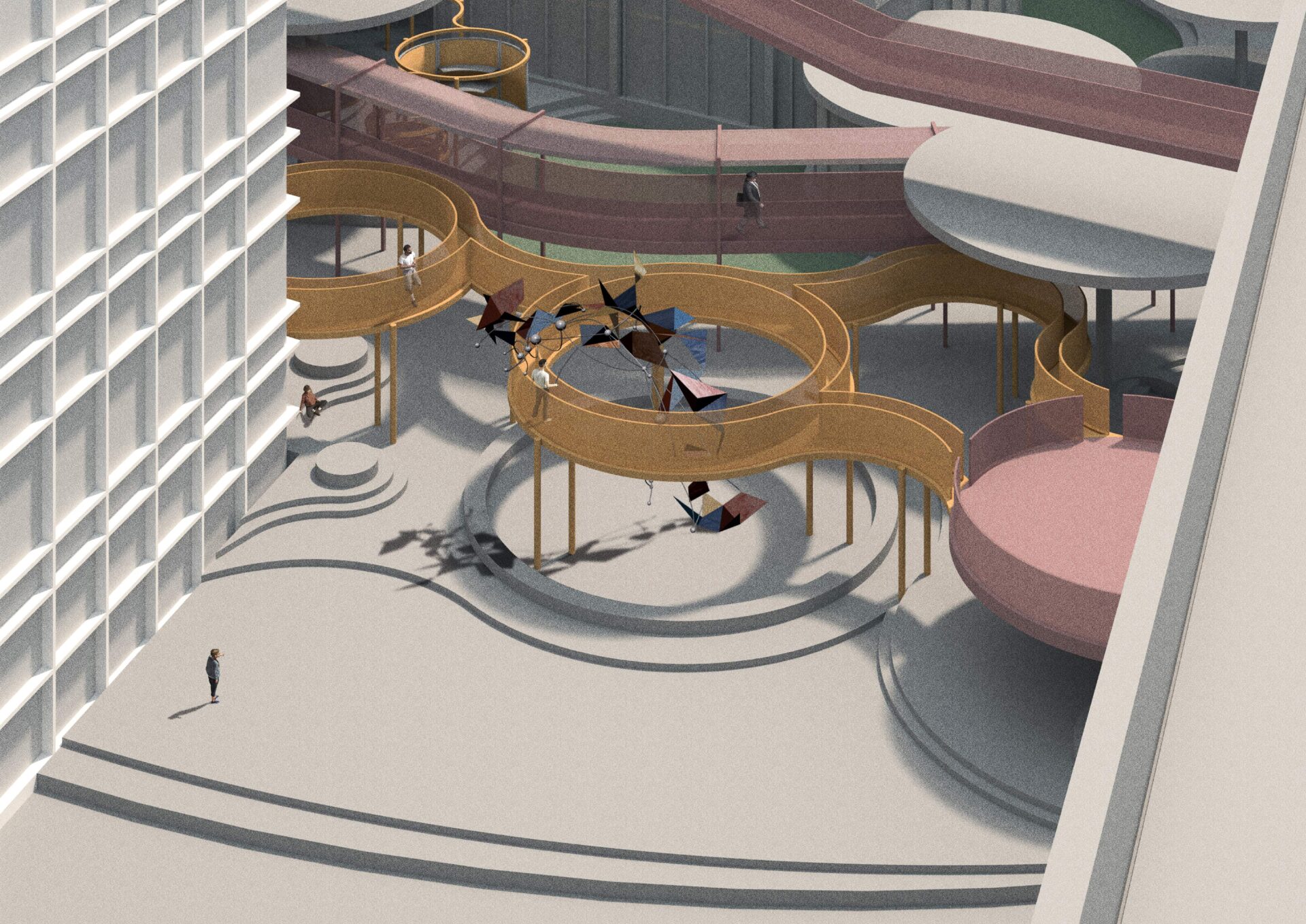
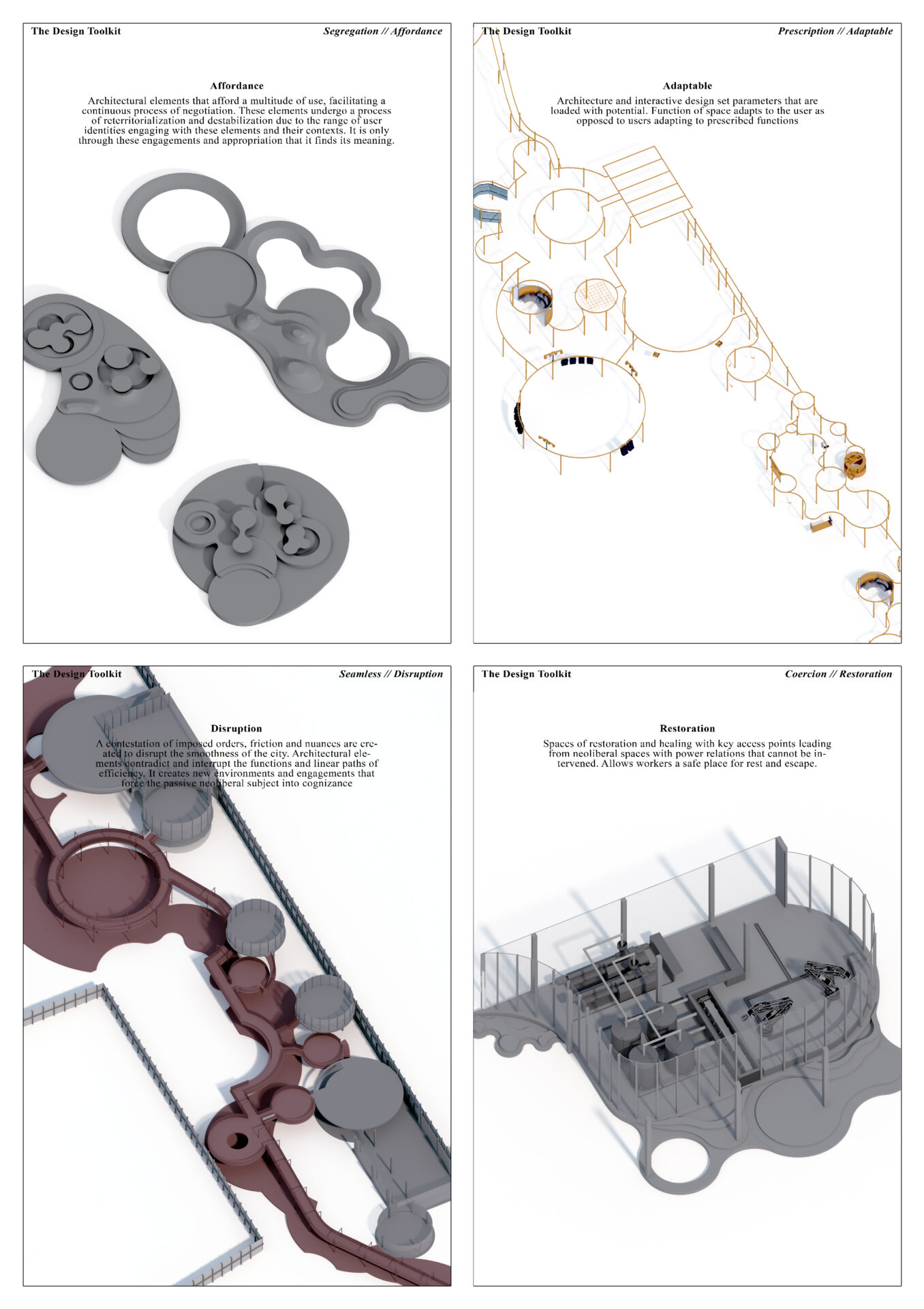
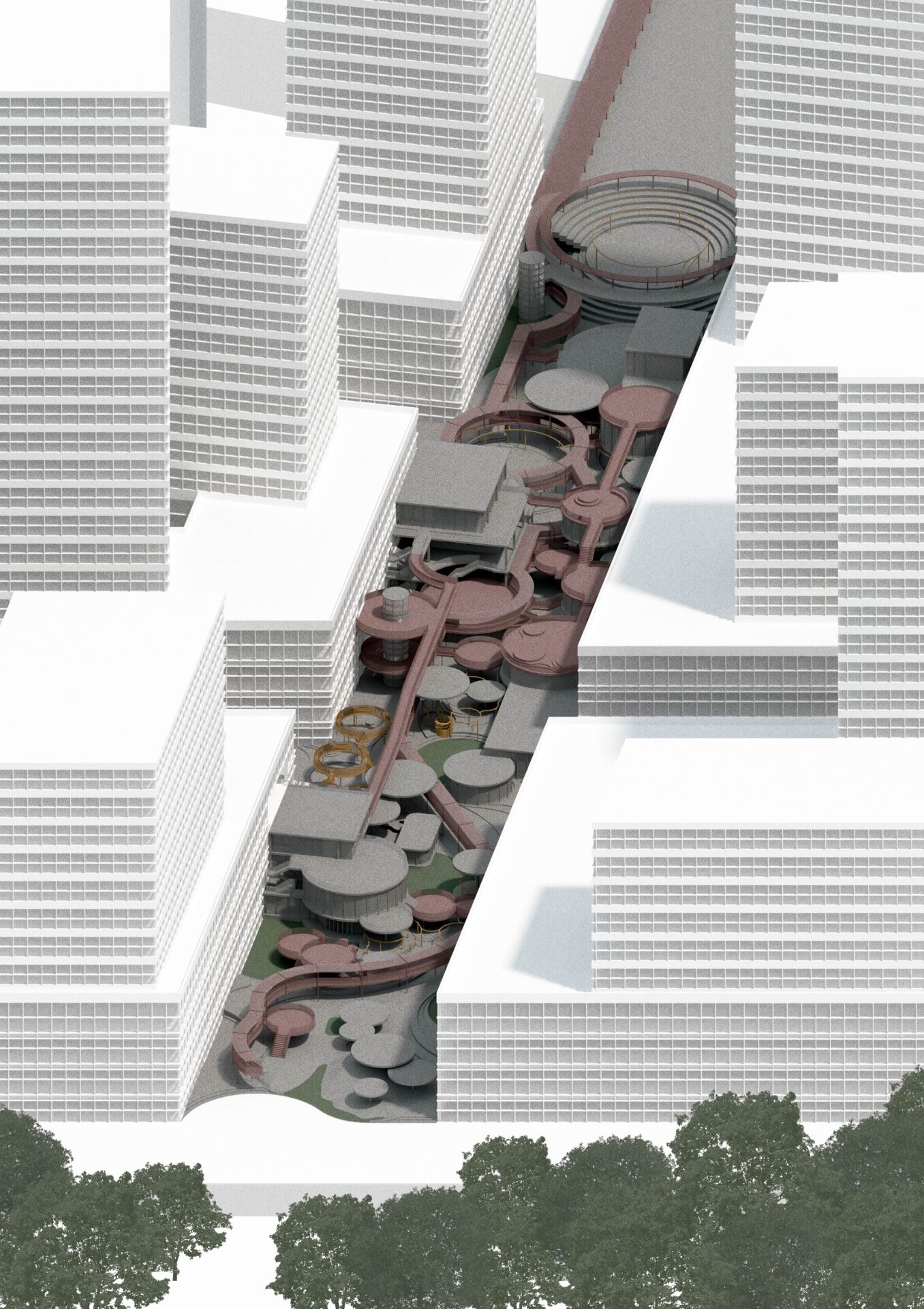
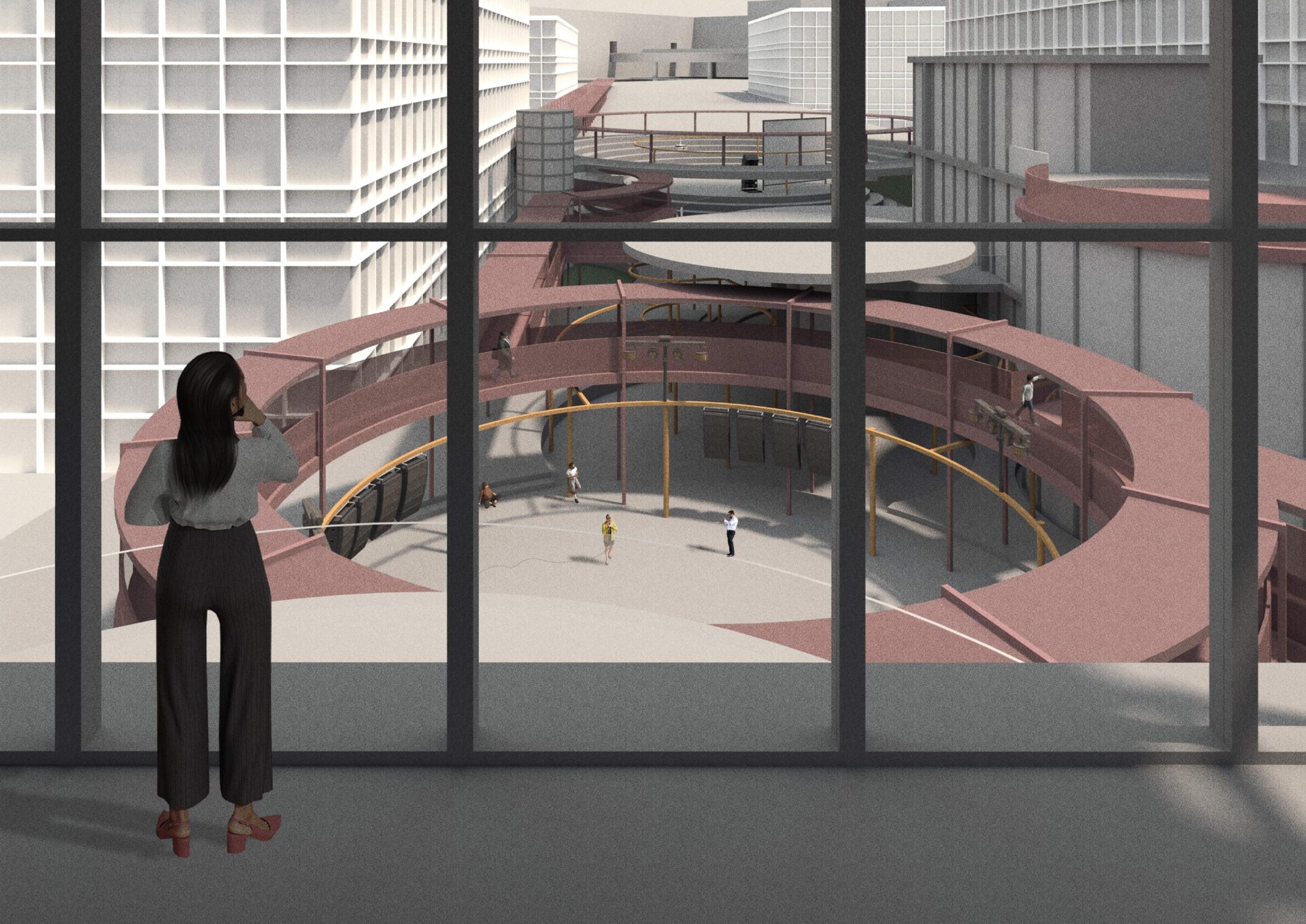
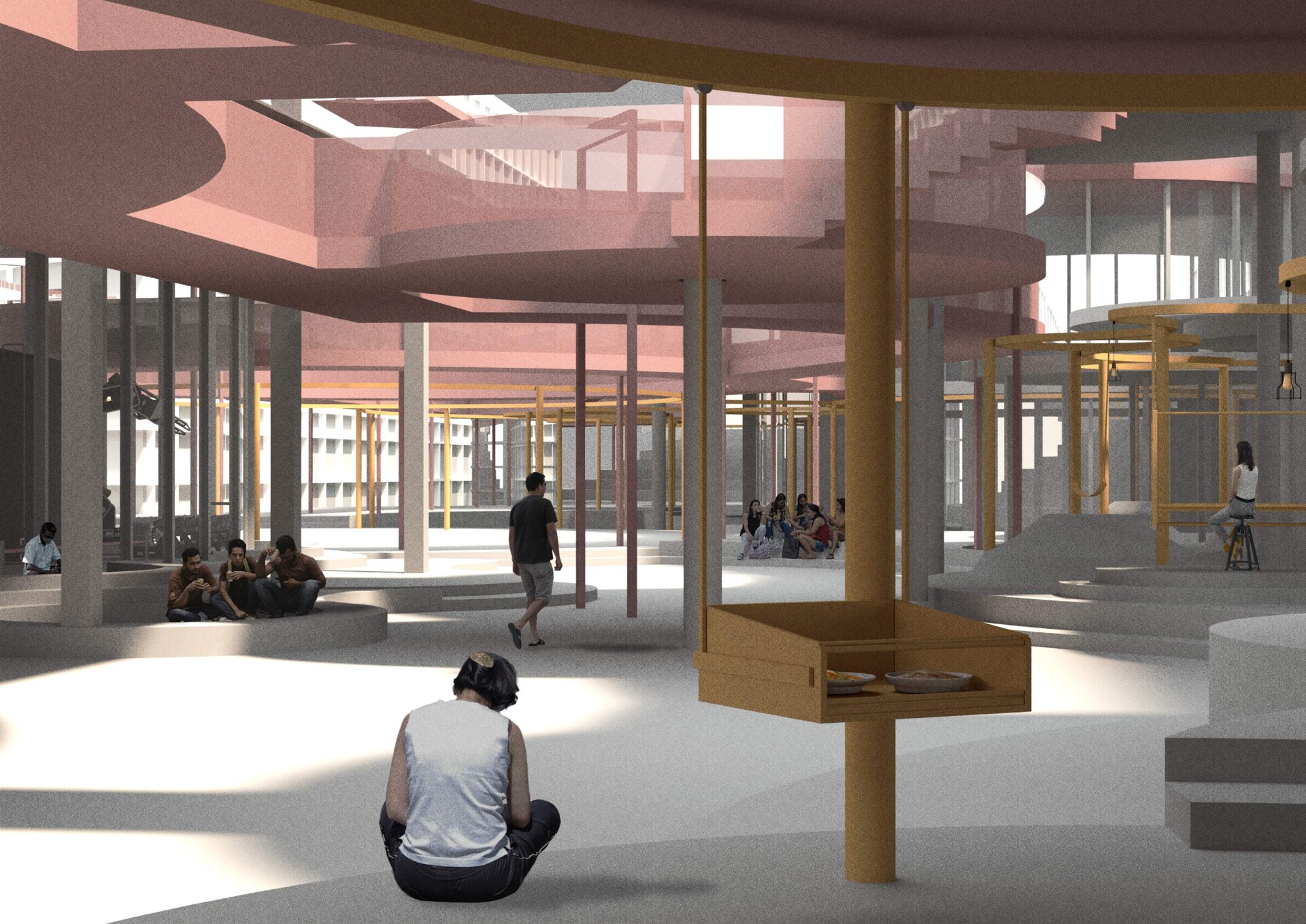

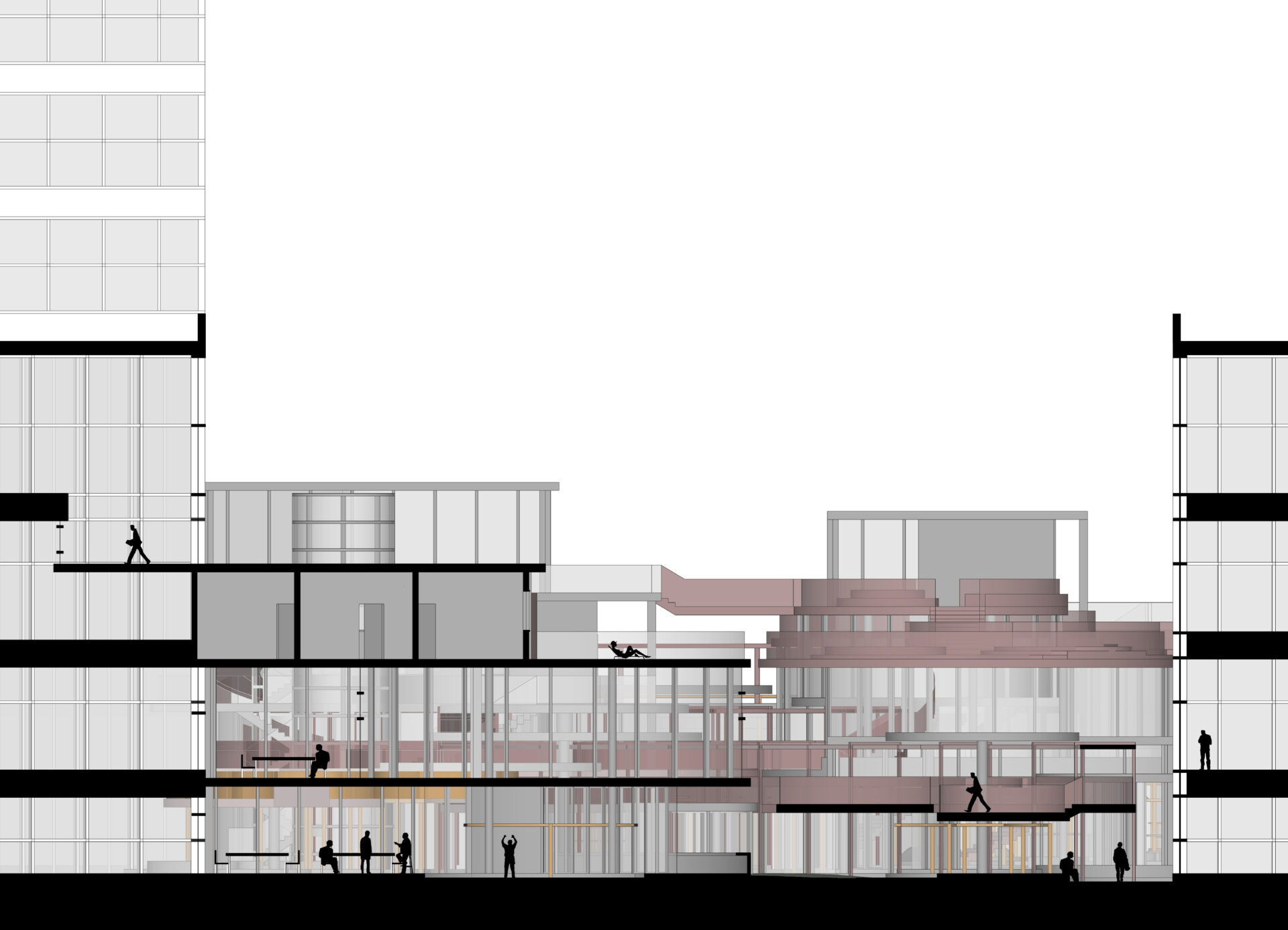
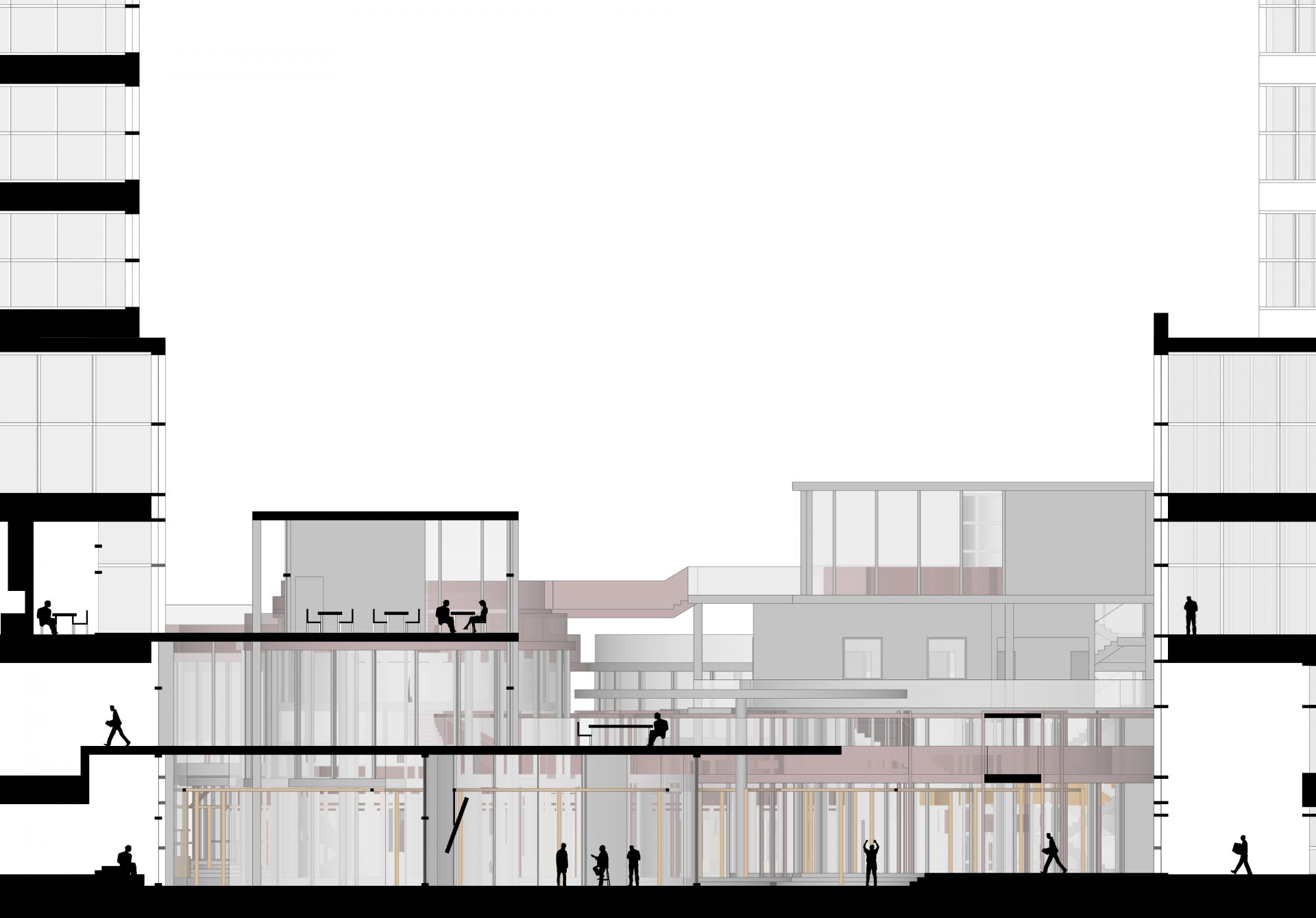
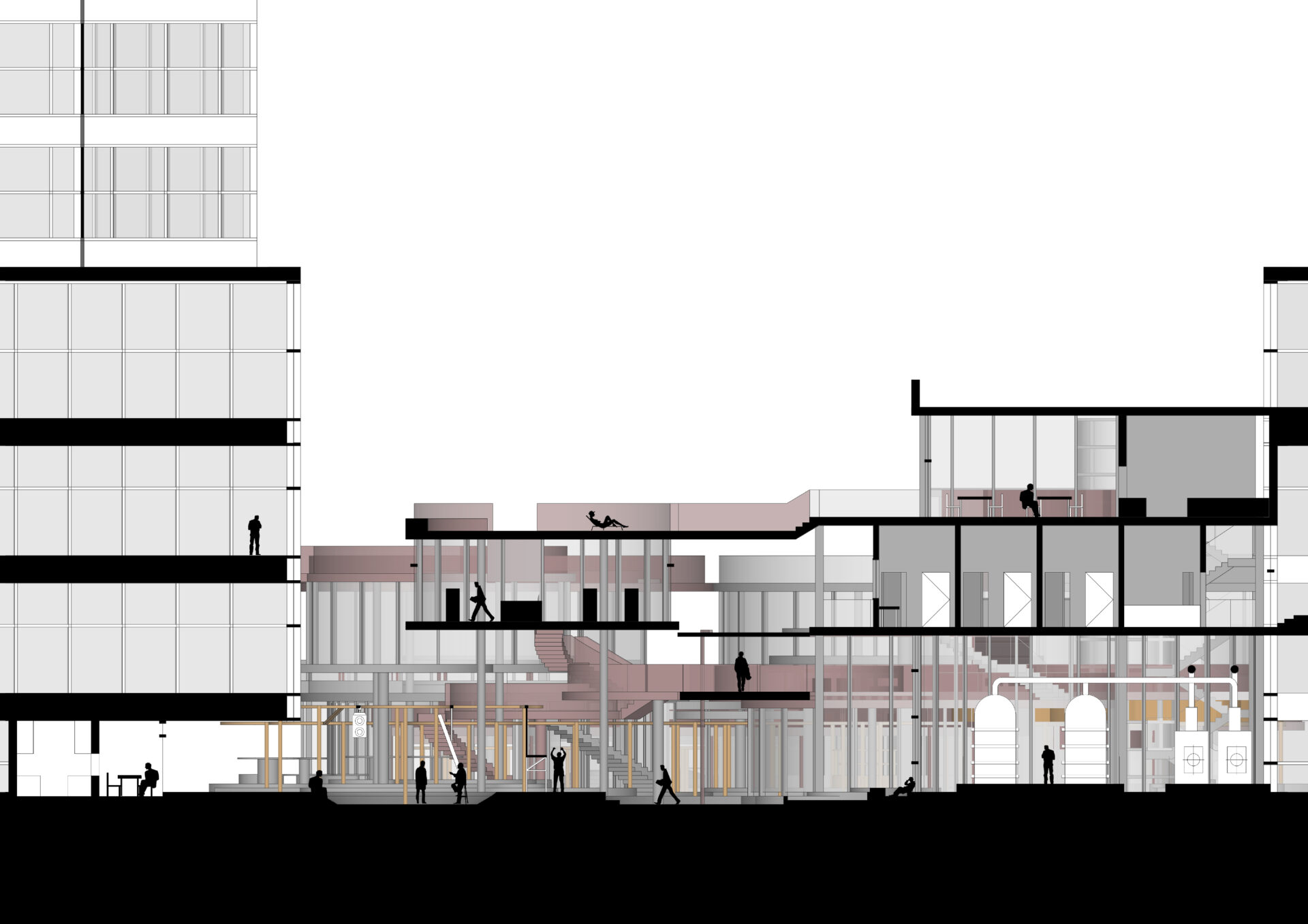
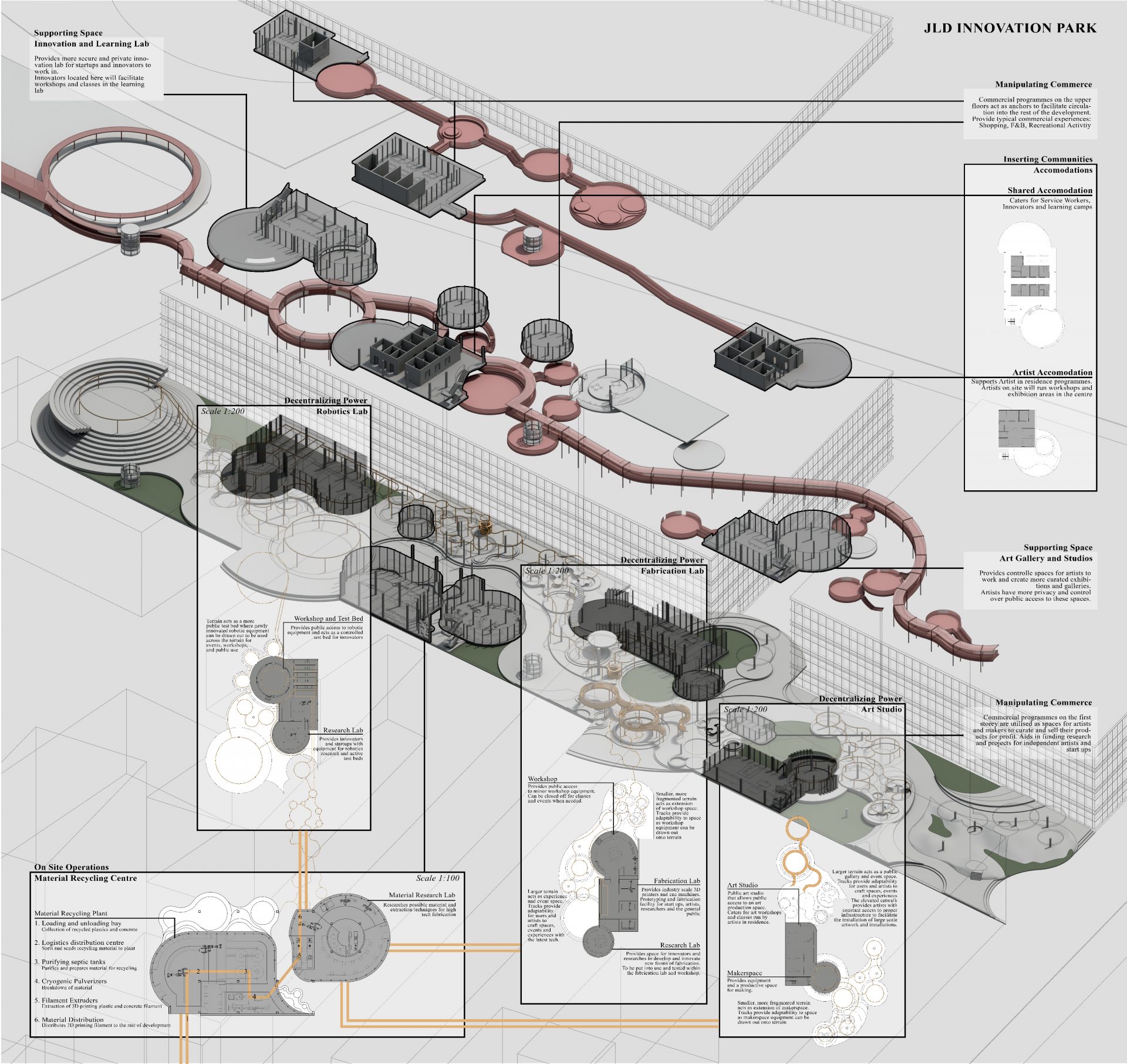
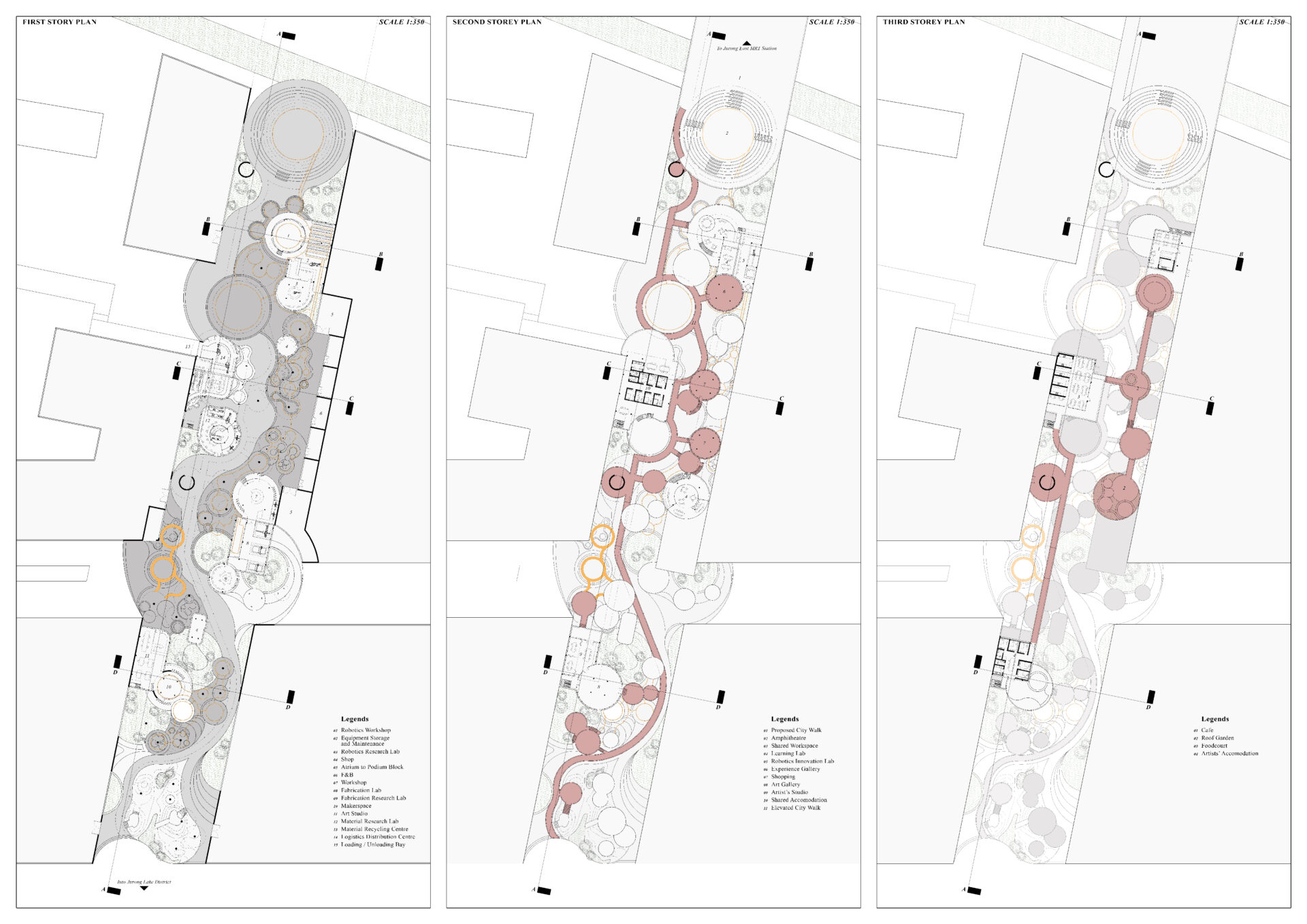
Supervisor's comments:
Whether intentional or non-intentional, constraining or enabling, power is intrinsically embedded in and mediated through architecture. This thesis represents a valuable critique of hegemonic power relationships amplified by the neoliberal system. Situated in the Jurong Lake District, ‘JLD Innovation Park’ explores tactics and mechanisms to challenge the speculated power hierarchies of future CBD. A toolkit of design strategies to dilute, diverge and manipulate power structures is applied to achieve power emancipation while challenging conventional unidirectional relationships between power sources and power “recipients”. Through redefining consumption, production, access to information and knowledge, and user experience, the design hopes to trigger and sustain inclusive and convivial qualities of a civic environment.
- Asst. Prof. Zdravko Trivic (Dr.)